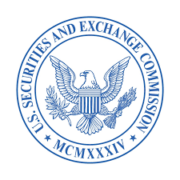PWC offer insight on human capital SEC disclosures
A summary of this release from PWC:
In August 2020, the SEC introduced new human capital disclosure requirements as part of its broader effort to modernize Regulation S-K. These rules, effective November 9, 2020, aim to provide stakeholders with deeper insights into how companies manage their workforce and invest in their people. With up to 85% of a company’s costs tied to human capital, these disclosures are critical for investors seeking to understand how management aligns its workforce strategy with operational and strategic goals.
The new rules require public companies to disclose material information about their human capital resources, including the number of employees and any measures or objectives used to manage the business. However, the SEC has taken a principles-based approach, leaving the definition of “human capital” and the specific metrics to disclose up to each company. This flexibility allows disclosures to be tailored to the unique circumstances of each business and industry, but it also raises questions about compliance and consistency.
Companies are encouraged to focus their disclosures on areas that are material to their business, particularly in light of current events such as the COVID-19 pandemic and the growing emphasis on diversity, equity, and inclusion (DEI). For example, COVID-19 has highlighted the importance of employee well-being, safety, remote work accommodations, and succession planning. Similarly, DEI has become a key area of corporate responsibility, with stakeholders expecting transparency on measures related to diversity, equitable opportunities, and inclusion initiatives.
To comply with the new rules, companies should take a structured approach to their human capital disclosures. This involves inventorying all human capital measures, narrowing them down to those that are material, implementing processes and controls to ensure reliability, and maintaining consistency in reporting over time. Effective governance and quality data are foundational to these disclosures, requiring clear processes, standardized metrics, and collaboration between human resources and finance teams.
A review of more than 2,000 Form 10-K filings from November 2020 to February 2021 revealed that most companies are including both qualitative and quantitative metrics in their disclosures. Common trends include reporting on employee demographics, lifecycle metrics like recruitment and retention, safety measures, and total rewards such as compensation and benefits. However, DEI disclosures often remain qualitative, with limited quantitative metrics related to diversity at the management level.
Looking ahead, the focus on human capital disclosures is likely to evolve, influenced by changes in the SEC’s priorities and broader ESG reporting trends. Companies must ensure their disclosures remain relevant, accurate, and transparent, supported by robust controls and processes. By doing so, they can provide stakeholders with a clear view of how they manage their workforce and create long-term value.
To navigate these new requirements effectively, companies should:
1. Evaluate which human capital measures are material to their business and align disclosures with their workforce strategy.
2. Focus on current events like COVID-19 and DEI, ensuring these areas are addressed if material.
Implement strong governance, controls, and processes to ensure the reliability and consistency of disclosures.
3. Periodically reassess the relevance of disclosed measures and adapt to evolving business needs and stakeholder expectations.
4. For further guidance, companies can leverage resources such as industry benchmarking tools, ESG reporting frameworks, and peer disclosures. By taking a proactive and thoughtful approach, businesses can meet regulatory expectations while demonstrating their commitment to workforce management and investment.


